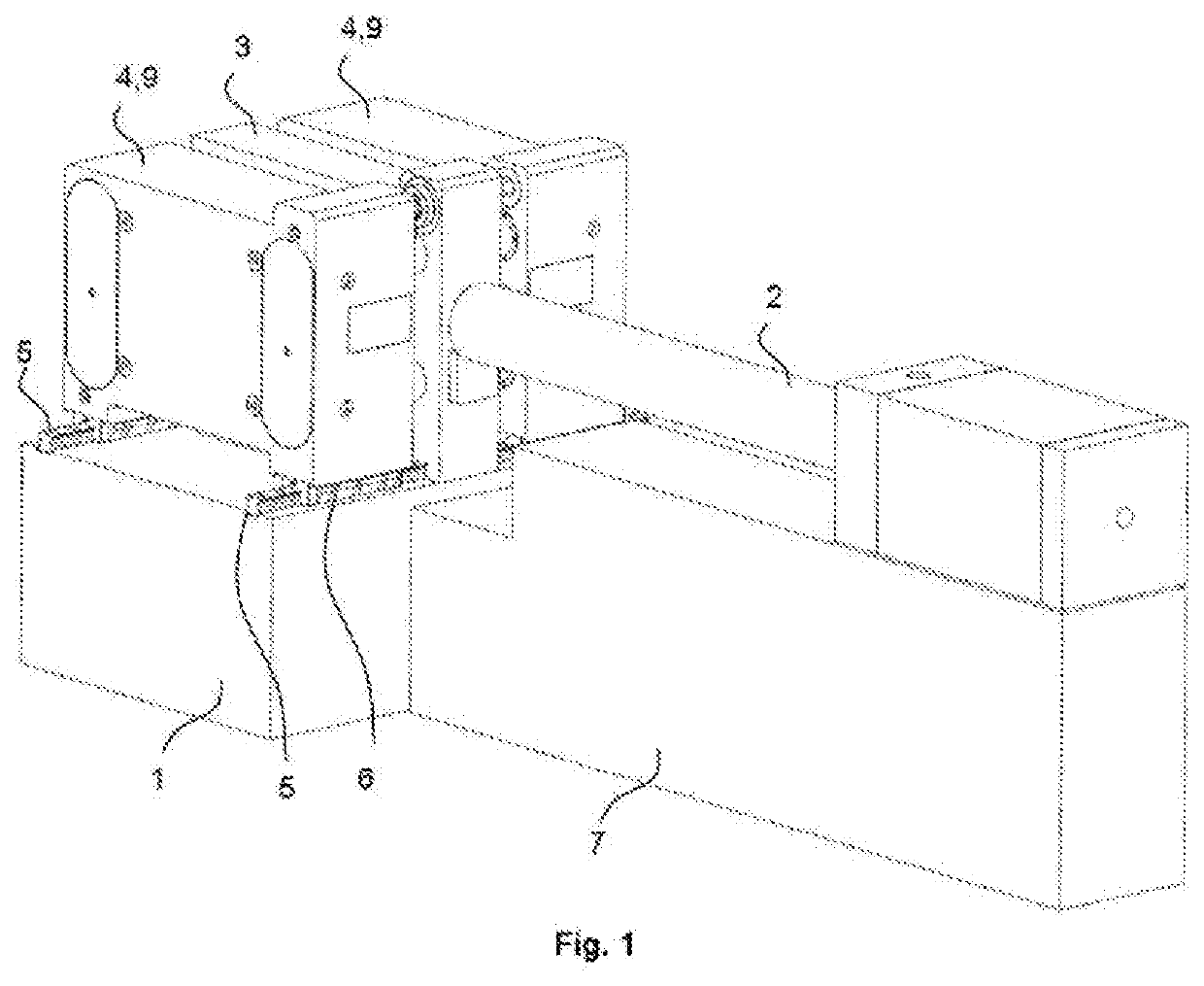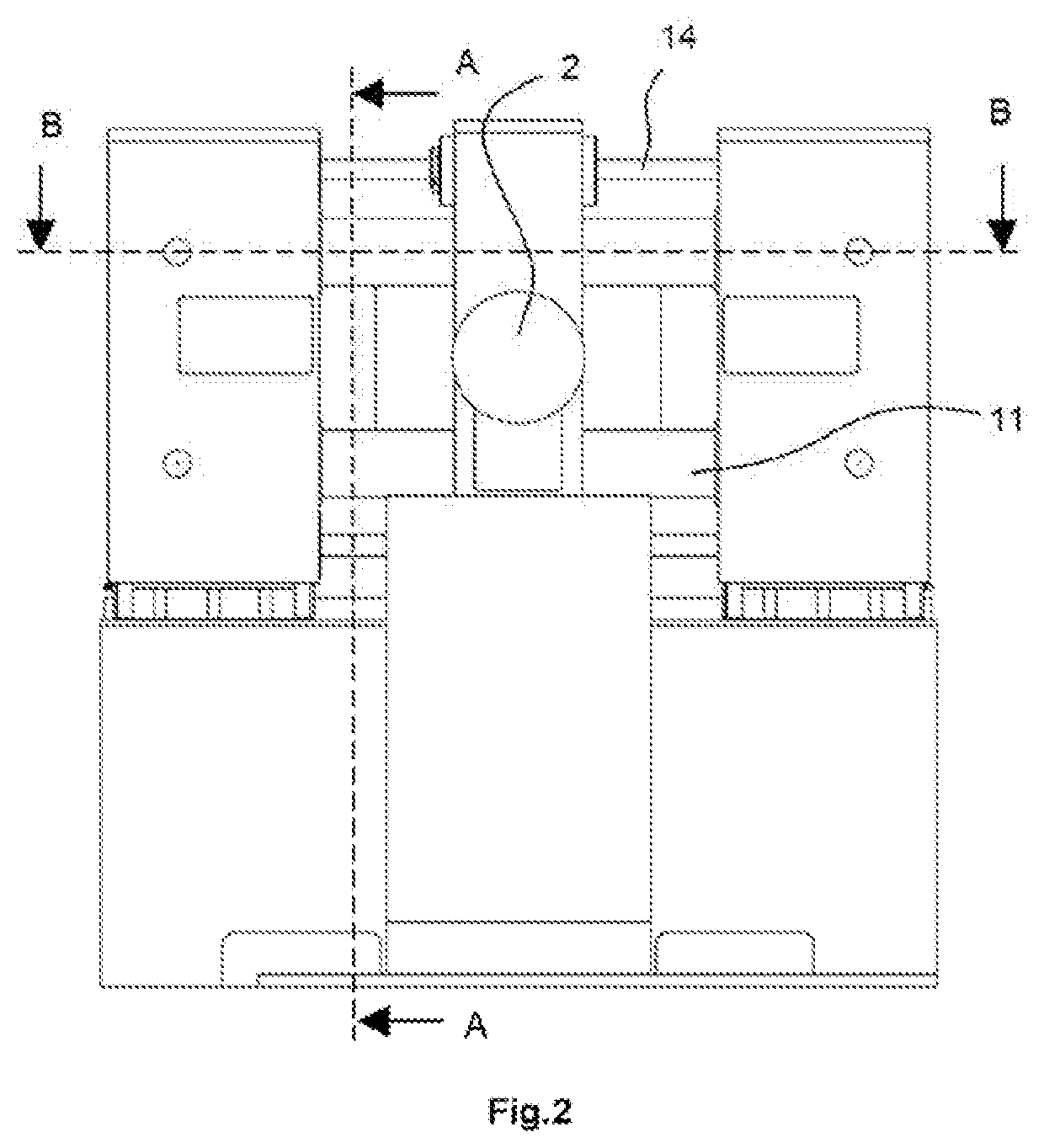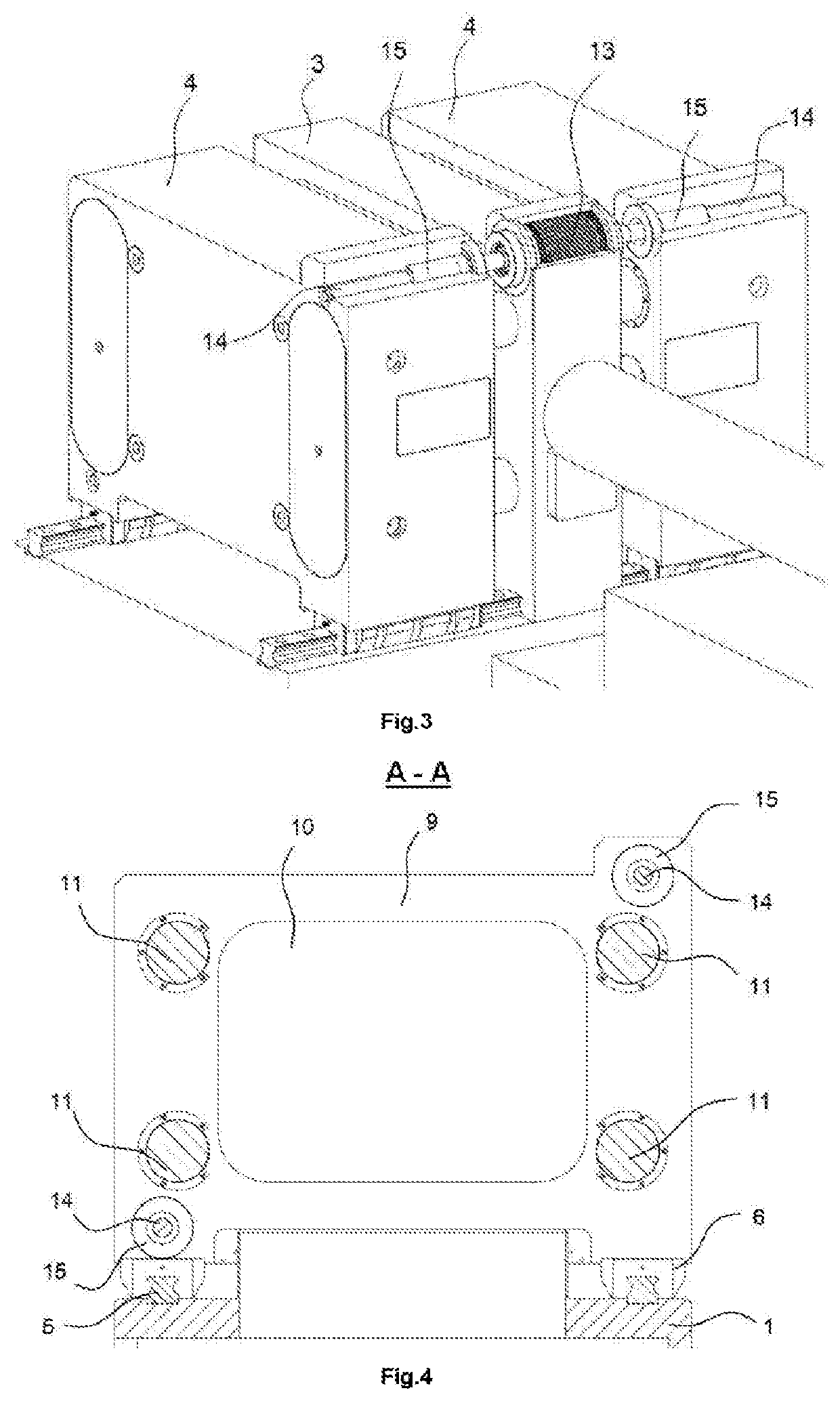Plastic injection molding machine and molding method
a technology of which is applied in the field of plastic injection molding machine and molding method, can solve the problems of defective mold closing, negative affecting the cycle time, and negatively affecting the opening time twofold
- Summary
- Abstract
- Description
- Claims
- Application Information
AI Technical Summary
Benefits of technology
Problems solved by technology
Method used
Image
Examples
first embodiment
[0030]FIG. 1 shows a perspective view of the injection machine object of the present invention in a closed mold position.
[0031]FIG. 2 shows a side view of the injection machine object of the present invention in an open mold position. The injection unit is partially shown for more clarity.
[0032]FIG. 3 shows a perspective view with a detail of a partial cross section of the actuation of a first movement system for the embodiment of the opening and closing movement of the mobile platens.
[0033]FIG. 4 shows an elevation view of a cross section A-A, according to FIG. 2, in which the face of the mobile platen is seen from the stationary central platen.
[0034]FIG. 5 shows a schematic cross section that shows the elements that are involved in the closing of the mold, according to the cross section B-B turned 90° indicated in FIG. 2. Some elements have been drawn with an intentionally large deformation in order to create a clearer description of the system.
[0035]FIG. 6 shows a transverse cros...
second embodiment
[0037]FIG. 8 shows the invention according to a general view of the injection machine object of the present invention in a closed mold position and with the injection and plasticization unit with the axis parallel to the opening and closing direction of the molds.
third embodiment
[0038]FIG. 9 shows a detail of a perspective view of the invention with the actuation of a second example of a movement system for carrying out the opening and closing movement of the plates.
PUM
| Property | Measurement | Unit |
|---|---|---|
| rotation | aaaaa | aaaaa |
| pressure | aaaaa | aaaaa |
| clamping force | aaaaa | aaaaa |
Abstract
Description
Claims
Application Information
 Login to View More
Login to View More - R&D
- Intellectual Property
- Life Sciences
- Materials
- Tech Scout
- Unparalleled Data Quality
- Higher Quality Content
- 60% Fewer Hallucinations
Browse by: Latest US Patents, China's latest patents, Technical Efficacy Thesaurus, Application Domain, Technology Topic, Popular Technical Reports.
© 2025 PatSnap. All rights reserved.Legal|Privacy policy|Modern Slavery Act Transparency Statement|Sitemap|About US| Contact US: help@patsnap.com



